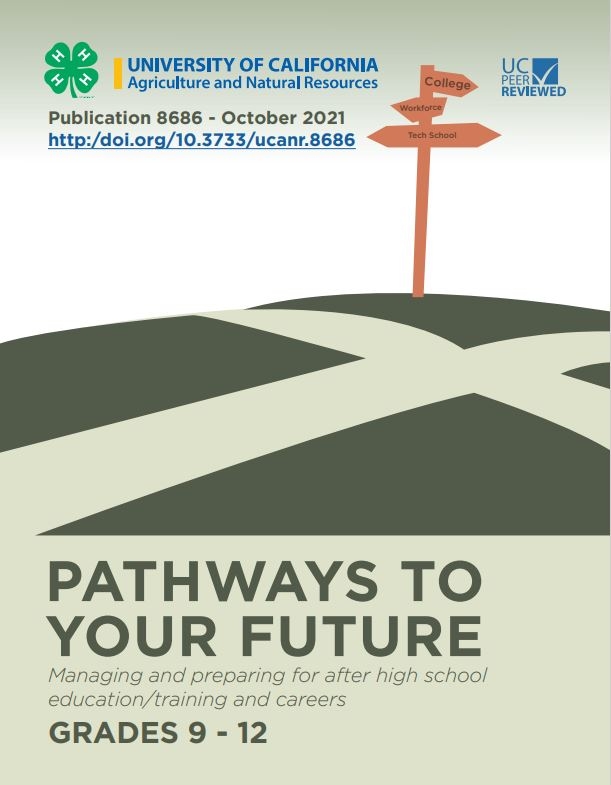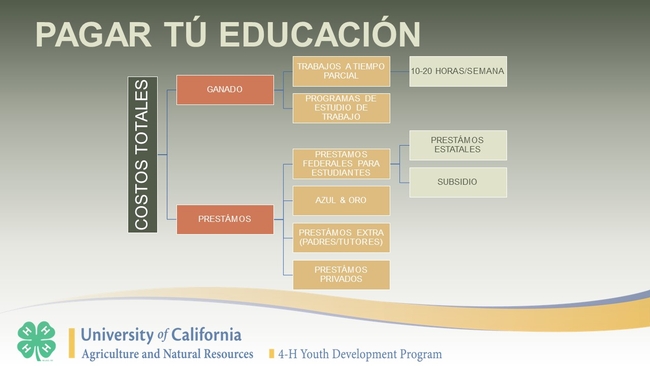New publication helps youth evaluate post-high school ‘pathways’
Free downloadable curriculum recognizes diverse family circumstances
Not all young people are on an expressway to a four-year college, and a new publication from University of California Agriculture and Natural Resources acknowledges their many circumstances and possibilities. The “Pathways to Your Future” curriculum invites high school-aged youth – and their families – to map their unique situations and passions before embarking on their own road.
Whereas similar guides might convey advice on a one-way street, this free download outlines a “hands-on” experience – in school settings or out-of-school programs – to help young people steer toward their best post-high-school education, training and career options.
“We wanted to make a youth-centered publication,” said co-author Claudia Diaz Carrasco, UC Cooperative Extension 4-H youth development advisor in Riverside and San Bernardino counties. “A lot of the content out there is based on delivering content to kids – just like information on college and careers; with ‘Pathways to Your Future', it's actually a skill-building curriculum so that youth are doing research and having critical discussions and making comparisons.”
In a pilot program that engaged 228 high schoolers across California (primarily 9th graders recruited from local 4-H programs), many participants said they appreciated that the curriculum presented a variety of pathways, including vocational education, non-degree certificate programs, community college, on-the-job training or entering the workforce – as well as four-year institutions of higher education.
“They have been liking that it doesn't start with ‘pick a college and get there,'” Diaz Carrasco said. “But really it's a self-reflection approach, where they start going back to what they're passionate about and what they think they're good at – and how much money they want to make in the future – and really just having that opportunity to know themselves before jumping into college or a career.”
To help them attain that clear-eyed perspective, the modules in the curriculum also debunk myths about the college experience and incorporate budgeting activities.
“This program gives youth the opportunity to constantly reflect on their learning as they get more data,” said another publication co-author, Lynn Schmitt-McQuitty, UC ANR's statewide 4-H director. “In the beginning, youth may have a very rigid or glamorized view of their future; the ‘Pathways' program grounds things and brings reality into the picture.”
Parents of the pilot-program participants – who predominantly identify as Latino – were also thankful for opportunities to engage in “real talk” with other parents about the wide array of options. Acknowledging the diversity of families across California, “Pathways to Your Future” also includes several sections in Spanish to make essential information more accessible.
“The parents need as much – or more – education on the processes, opportunities and expectations to support post-high school life,” Schmitt-McQuitty explained.
In addition to integrating families into discussions about their future, the curriculum also provides spaces for the high schoolers to participate in panel discussions with their slightly older peers, who recently went through their own decision-making journeys.
“The youth really appreciate seeing someone like themselves talking about what they went through, how they overcame obstacles,” said Diaz Carrasco. “They feel really inspired that there is a pathway for themselves.”
For assistance and support in bringing the “Pathways” curriculum to your community, contact your county's Cooperative Extension office, reach out to the local 4-H program, or email Claudia Diaz Carrasco at cpdiaz@ucanr.edu.
The other authors of the publication are Shannon Horrillo (College of Agriculture, Biotechnology, and Natural Resources, University of Nevada, Reno Extension), Darlene McIntyre and Nathaniel Caeton (UC ANR), and Martin Smith (University of California, Davis).


